I have created a dataframe with this code: The objective of this is to find the weekly low and to get the dates date at which the weekly low took place. To do this:
import pandas as pd
from pandas_datareader import data as web
import pandas_datareader
import datetime
df = web.DataReader('GOOG', 'yahoo', start, end)
df2 = web.DataReader('GOOG', 'yahoo', start, end)
start = datetime.datetime(2021,1,1)
end = datetime.datetime.today()
df['Date1'] = df.index
df['month'] = df.index.month
df['week'] = df.index.week
df['day'] = df.index.day
df.set_index('week',append=True,inplace=True)
df.set_index('day',append=True,inplace=True)
To get the weekly low :
df['Low'].groupby(['week']).min().tail(50)
I trying to find out the date on which weekly low occured: Such as 1735.420044
If i try to do this :
df['Low'].isin([1735.420044])
I get :
Date week day
2020-12-31 53 31 False
2021-01-04 1 4 False
2021-01-05 1 5 False
2021-01-06 1 6 False
2021-01-07 1 7 False
...
2021-08-02 31 2 False
2021-08-03 31 3 False
2021-08-04 31 4 False
2021-08-05 31 5 False
2021-08-06 31 6 False
Name: Low, Length: 151, dtype: bool
How can i get the actual dates for the low?
